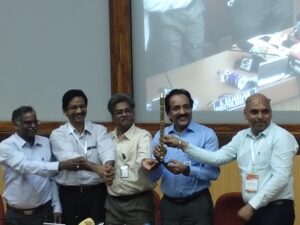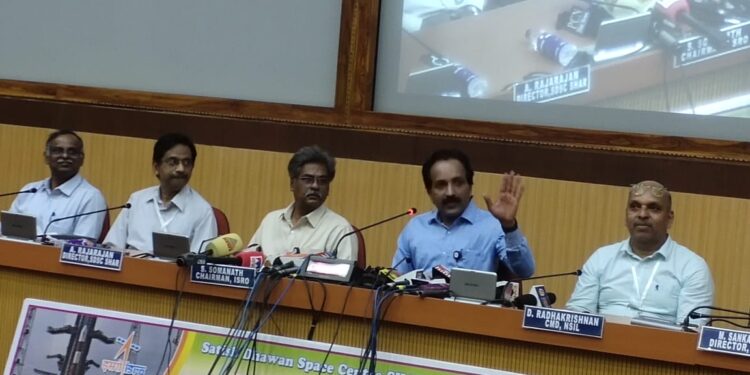SRIHARIKOTA (AP), JULY 1

Stating that a lot of focus would have to be on safety when humans are sent to space, the much expected manned space mission of Indian Space Research Organisation (ISRO) will not happen this year or next year, said S Somanath, Chairman here on Thursday.
“It is a very important mission. We have to be extremely careful when we send humans to space,” Somanath said at a press conference after the successful launch of three Singapore satellites by ISRO at the Sathish Dhawan launch pad here.
Read Also:
He said tests were being conducted with regard to safety. “We are testing it more number of times, We would like to do it very cautiously.”
- The ISRO chief emphasised that various demonstrations would be taken up and an unmanned mission in the middle of next year and make sure everything is fine
- I don’t want to end up doing the Gaganyaan programme with a disaster
- The pad work for Chandrayaan-3 mission, a follow up of Chandrayaan-2, is underway: S Somanath
The ISRO chief emphasised that various demonstrations would be taken up and an unmanned mission in the middle of next year and make sure everything is fine. “(Gaganyaan) cannot happen this year or next year. This is for the safety of our folks.”
“We need to remove the worry part – any time it can burst. Worry can be removed only by ruggadising the object, testing it more number of times and introducing intelligence in the rocket so that it can identify problems, let the aircraft know pilots can escape. But rockets cannot do that. Rockets are moving very fast and rockets themselves have to find out something is going bad now so let these fellows go away. It will automatically command an escape system and the astronauts can escape. This is new system currently what we are doing is let us wait for some more time.”
“If we want to fly astronauts, we need to first prove the safety system.. It has to go through many tests. We are trying to do that this year. I don’t want to end up doing the Gaganyaan programme with a disaster. We will want to do it very cautiously.”
Chandrayaan-3 project
Regarding Chandrayaan-3, Somanath said currently a lot of tests were going on and added that “this time we are not in a hurry to go to the moon.”
“This time we want to make sure we land on the moon.”
“Currently the tests on lander propulsion and lander systems are underway. We want to make it very rugged. We have made the lander rugged. So some mass increase in lander has occurred. Its legs have been made stronger. Propulsion system needs to be rugged. Tests are going on at Mahendragiri for proving that. We want to look at the sensors. Last time we had doubts on sensors. So we are adding new sensors, helicopter sorties, experiments. Let us complete all tests and be clear,” he further said.
The Chandrayaan-3 mission is a follow up of Chandrayaan-2, which was India’s first mission to land on the lunar south pole. However, the lander Vikram hard-landed in September 2019.
Asked if there were plans to make the PS-IV stage a routine experiment after in-orbit scientific experiments were carried out, Somanath said, “normally the 4th stage would end up as debris in space. But, ISRO has repurposed the fourth stage and introduced a computer, control system to fire its thrusters, sensors such as star sensors that will enable it look at the stars and find its own position and also send commands from the ground.”
The PSLV Orbital Experimental Module (POEM) activity performs in-orbit scientific experiments using the spent PS4 stage as an orbital platform, ISRO said. It is the first time that the PS4 stage would orbit the earth as a stabilised platform.
With regard to the GSLV commercial launch, Somanath said GSLV is currently booked for our own internal launches. “So we are not offering GSLV-Mk II for commercial launches for the time being. Mk-III we have already announced for launch for commercial launches. Next mission will be a commercial mission. That will carry a very well known OneWeb satellites, mid Sept-Oct this year and next year by January 2023.”
Pride of Tamil Nadu: Status of Kulasekarapattinam Spaceport
On the spaceport expected to come up at Kulasekarapattinam, Somanath said, “2,000 acres has come to ISRO’s hands through acquisition. Area where we have to build the launch pad is with us and the design process has been completed. Tendering process has just begun,” ISRO Chief said.












